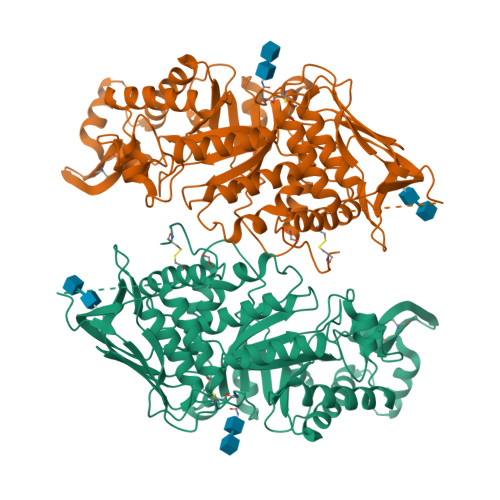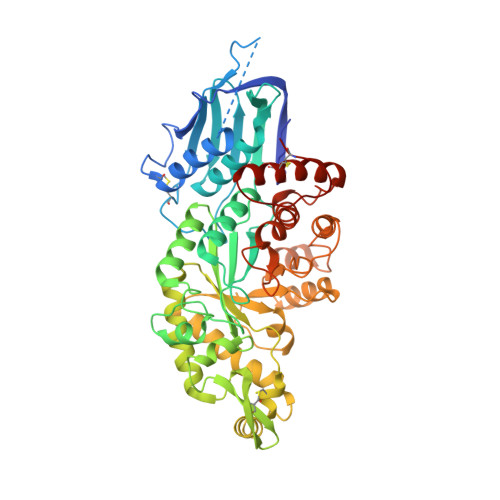Protease-resistant modified human beta-hexosaminidase B ameliorates symptoms in GM2 gangliosidosis model.
Kitakaze, K., Mizutani, Y., Sugiyama, E., Tasaki, C., Tsuji, D., Maita, N., Hirokawa, T., Asanuma, D., Kamiya, M., Sato, K., Setou, M., Urano, Y., Togawa, T., Otaka, A., Sakuraba, H., Itoh, K.(2016) J Clin Invest 126: 1691-1703
- PubMed: 27018595
- DOI: https://doi.org/10.1172/JCI85300
- Primary Citation of Related Structures:
5BRO - PubMed Abstract:
GM2 gangliosidoses, including Tay-Sachs and Sandhoff diseases, are neurodegenerative lysosomal storage diseases that are caused by deficiency of β-hexosaminidase A, which comprises an αβ heterodimer. There are no effective treatments for these diseases; however, various strategies aimed at restoring β-hexosaminidase A have been explored. Here, we produced a modified human hexosaminidase subunit β (HexB), which we have termed mod2B, composed of homodimeric β subunits that contain amino acid sequences from the α subunit that confer GM2 ganglioside-degrading activity and protease resistance. We also developed fluorescent probes that allow visualization of endocytosis of mod2B via mannose 6-phosphate receptors and delivery of mod2B to lysosomes in GM2 gangliosidosis models. In addition, we applied imaging mass spectrometry to monitor efficacy of this approach in Sandhoff disease model mice. Following i.c.v. administration, mod2B was widely distributed and reduced accumulation of GM2, asialo-GM2, and bis(monoacylglycero)phosphate in brain regions including the hypothalamus, hippocampus, and cerebellum. Moreover, mod2B administration markedly improved motor dysfunction and a prolonged lifespan in Sandhoff disease mice. Together, the results of our study indicate that mod2B has potential for intracerebrospinal fluid enzyme replacement therapy and should be further explored as a gene therapy for GM2 gangliosidoses.



















